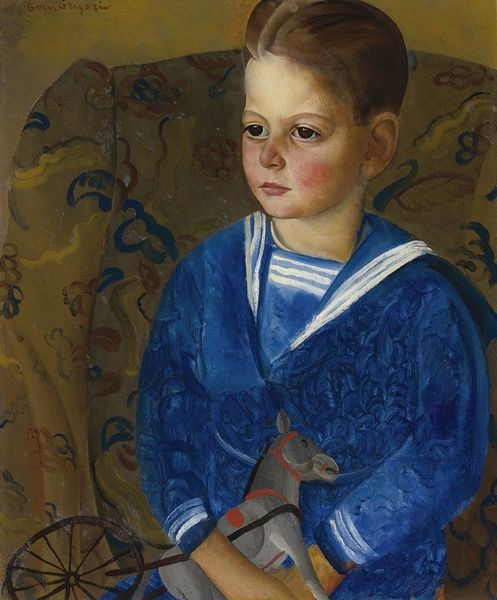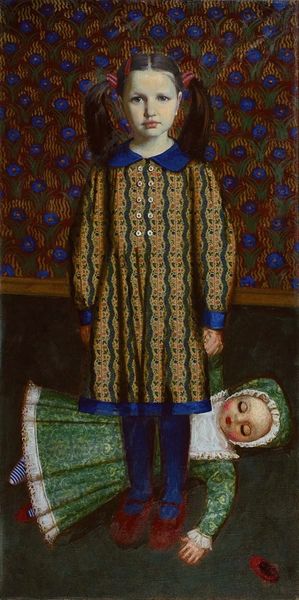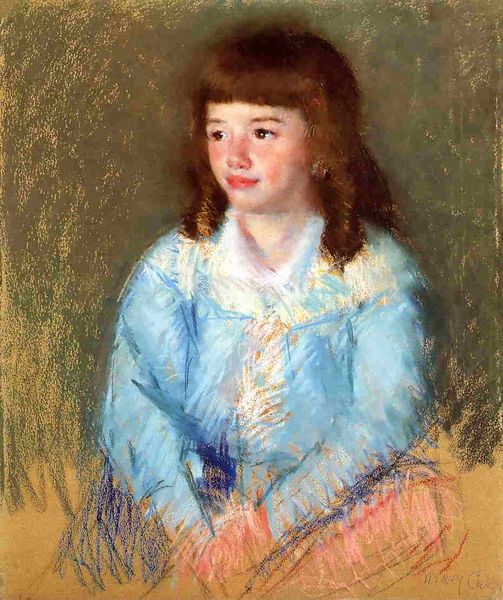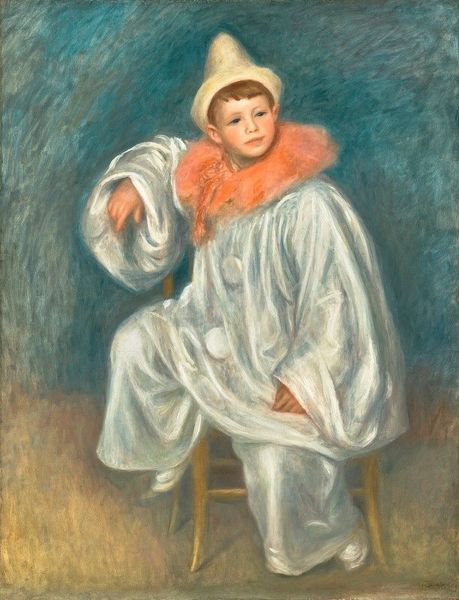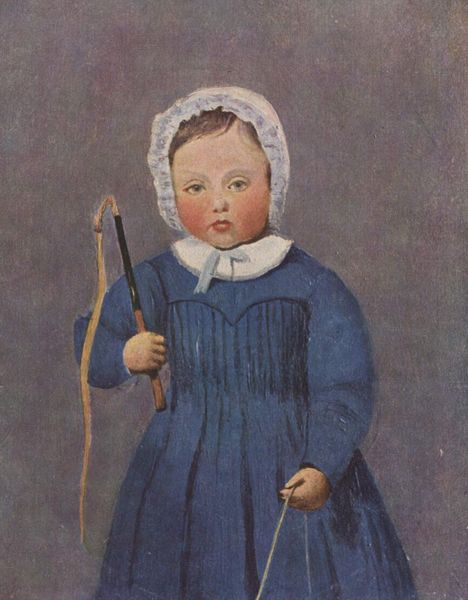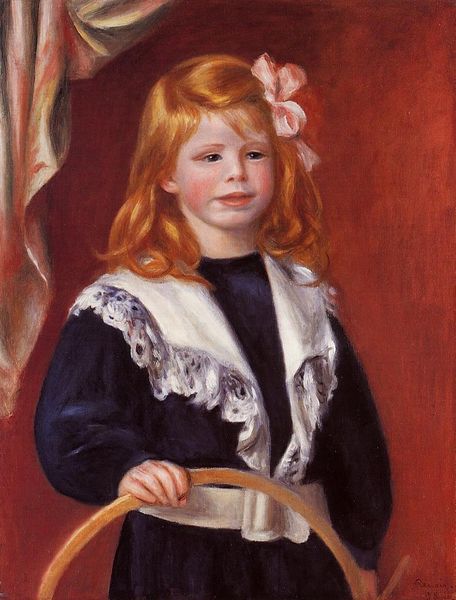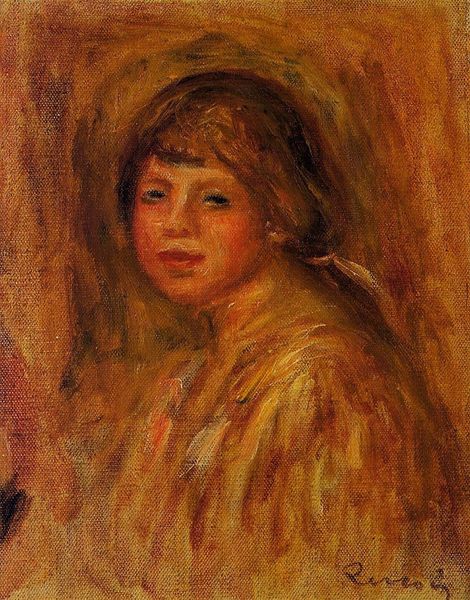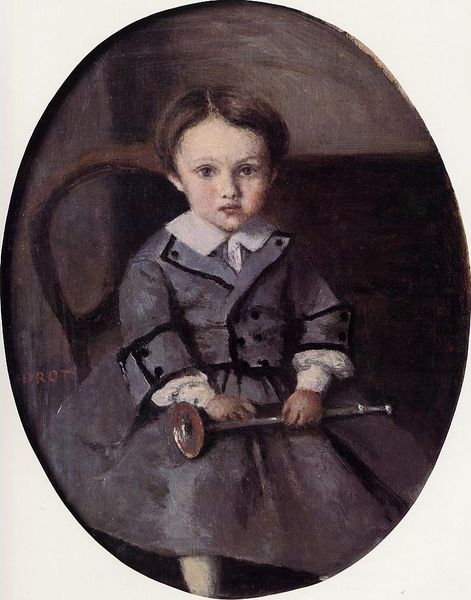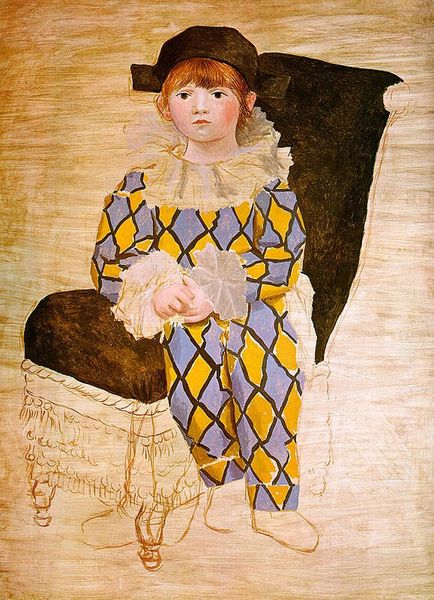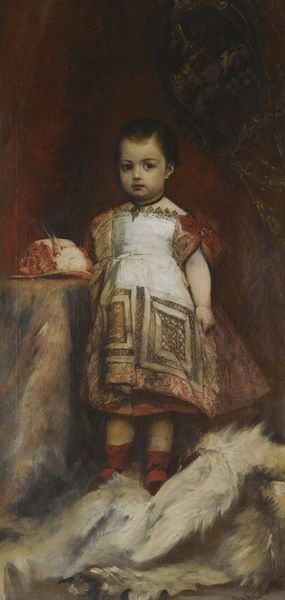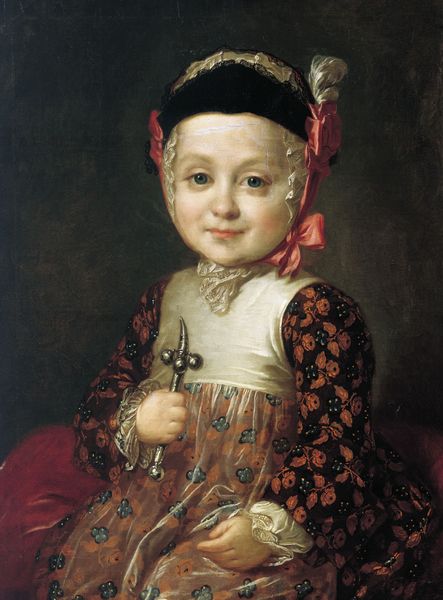
painting, oil-paint
#
portrait
#
painting
#
oil-paint
#
figuration
#
oil painting
#
child
#
genre-painting
#
realism
Copyright: Public domain
Curator: Looking at William Glackens' oil painting, "Lenna, the Artist's Daughter, in a Chinese Costume" from 1918, the first thing that strikes me is how the textures interplay, almost vibrate, across the canvas. Editor: It has a distinctly theatrical air about it, doesn’t it? Like a staged portrait intended to capture something more than just a likeness. There’s an echo of empire and its aesthetics being deployed here. Curator: Indeed. Considering the time it was made, during the First World War, there are complex questions of appropriation at work. Glackens would have had access to imported textiles and garments, shaping his family’s interactions with a globalized market that war was violently interrupting. He has not rendered detail for its own sake; instead he shows us a generalized "Chinese" costume – think of the social dynamics involved, dressing a young girl to signify wealth, trade, and maybe fantasy in this exoticized form. Editor: The symbols are clearly important. Think about the butterflies and floral motifs stitched onto the robe. The butterfly often symbolizes transformation and joy, while flowers can represent beauty and the ephemeral nature of life. In wartime, such imagery might represent a yearning for peace and a return to simpler pleasures, reflected in this vision of youthful innocence, untouched by worldly troubles. Curator: The choice of oil paint is central. Glackens is actively manipulating a costly and historically relevant material to craft a fleeting impression of the moment. Note his visible brushstrokes – it highlights the labor involved in depicting both daughter and the imported garments that mark status. It becomes not just representation, but also an enactment of cultural exchange through painterly craft. Editor: I see a parallel between that physical application of paint and how the ‘exotic’ or ‘foreign’ is applied to Lenna herself. It's like putting on a mask, and perhaps a childhood fantasy as well? Glackens captured something resonant with the orientalist fascination so embedded within that period’s collective psyche. Curator: Exactly. The composition itself pulls us in through vibrant colors, making consumption and appropriation into aesthetic experience. Even with the visible brushwork there’s an invitation to absorb not just an image but participate in the narrative of desire and trade it represents. Editor: It certainly compels me to ponder the emotional landscape woven into the visual symbols and cultural artifacts on display. This wasn’t just about painting; it was about invoking cultural memories, and even desires. Curator: Seeing this artwork through the lens of its material and social implications unveils not just the painting, but our complex relationships with culture, production, and privilege during Glackens's time. Editor: For me, focusing on those images within an image opens portals to questions around our collective dreams and cultural fixations with foreign or ‘other’ motifs through symbolic portraiture.
Comments
No comments
Be the first to comment and join the conversation on the ultimate creative platform.
